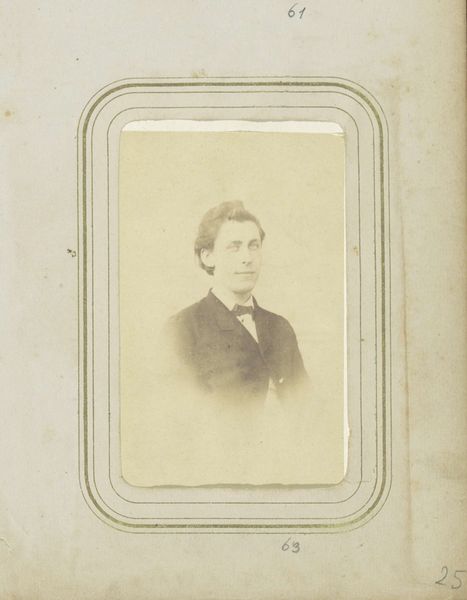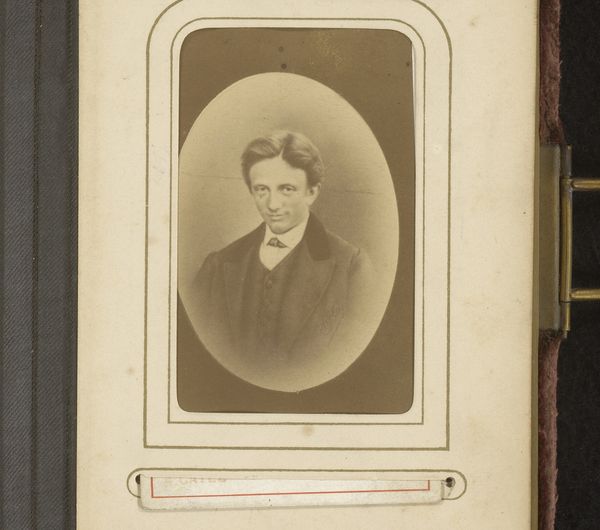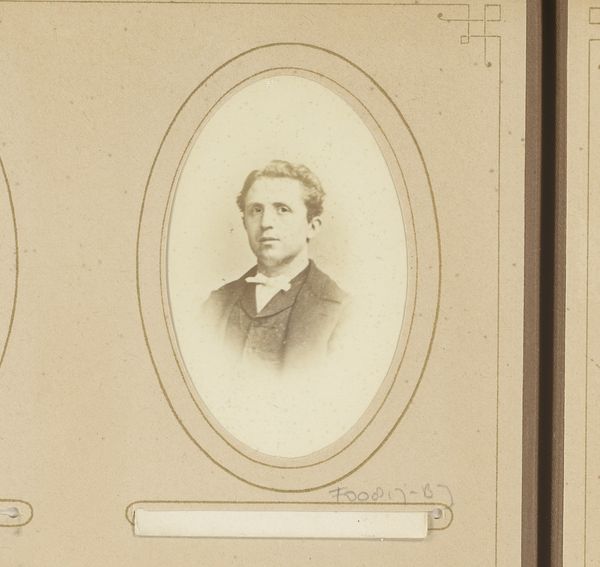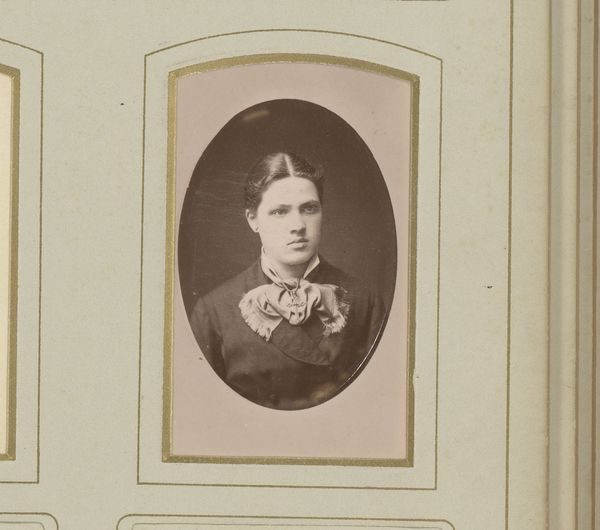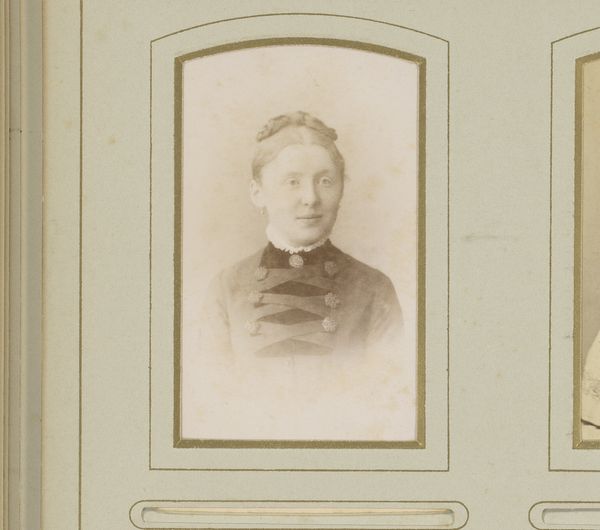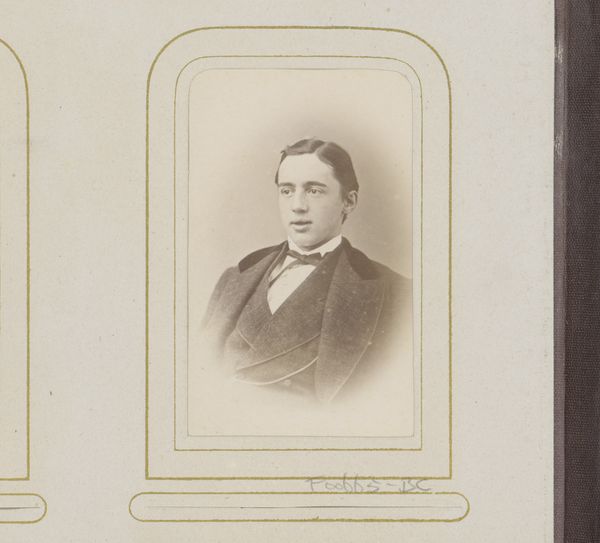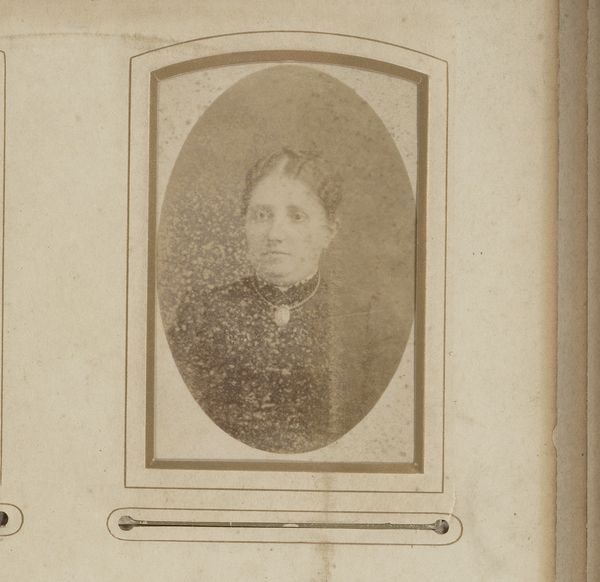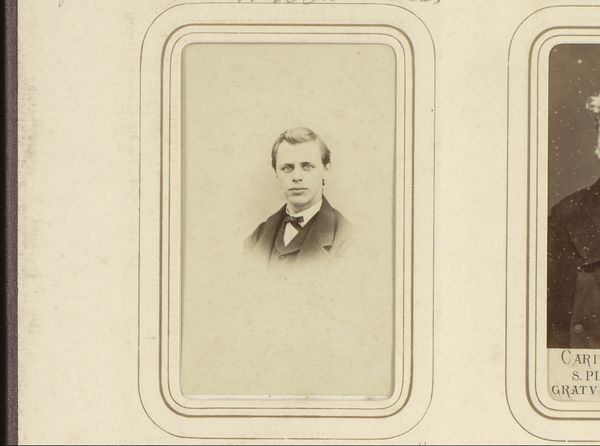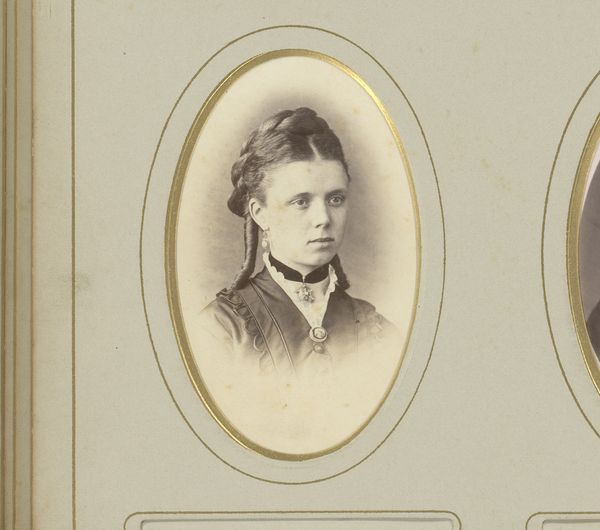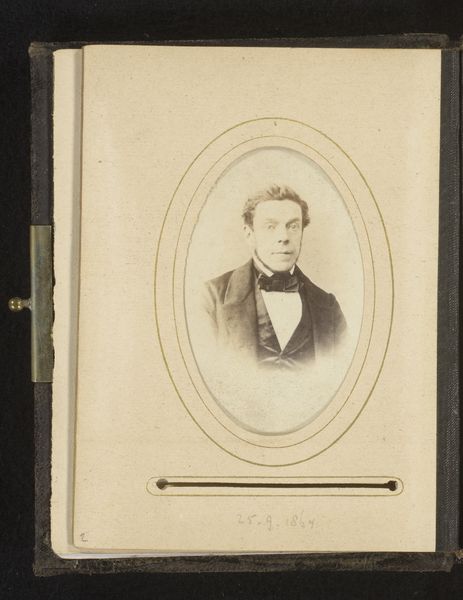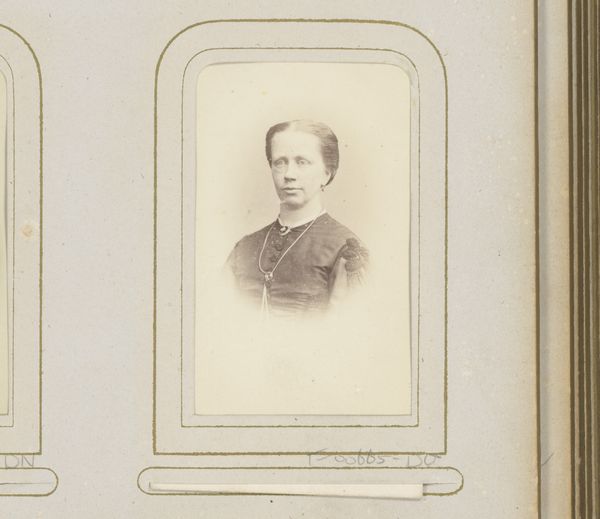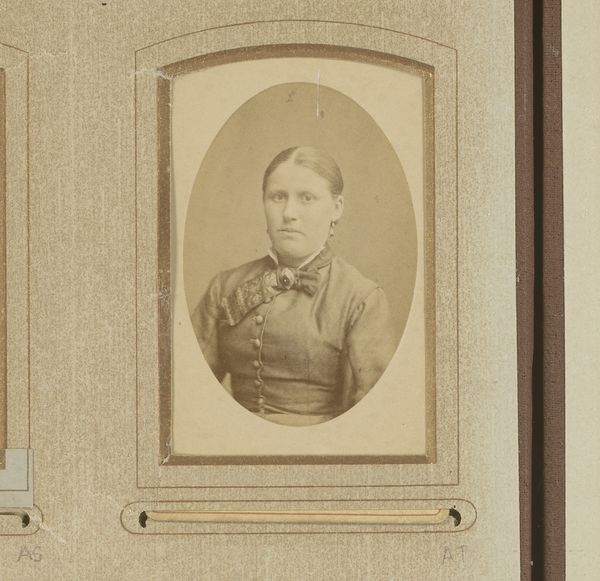
photography, gelatin-silver-print
#
portrait
#
photography
#
gelatin-silver-print
Dimensions: height 82 mm, width 50 mm
Copyright: Rijks Museum: Open Domain
Curator: This captivating portrait before us, known as "Portret van een vrouw met bril," was captured sometime between 1867 and 1885 by Christiaan Martinus Jan Hermelink. It is a gelatin-silver print, a process which rose to popularity in the latter part of the 19th century. What is your first reaction to the photograph? Editor: My eye is drawn immediately to the oval frame, giving this woman an almost ethereal quality. I am wondering what her medallion might symbolize. Curator: It is striking how a seemingly mundane object like a pair of glasses, front and center, becomes so fascinating when understood through the development of photography and print-making techniques. The rise of gelatin-silver prints offered unprecedented detail at an affordable cost, making images like these, with all their nuances, more accessible. The details of her clothes, glasses, everything…it is the fruit of significant labor. Editor: Exactly. Glasses could be seen as a signifier of knowledge, social standing, and perhaps even intellect. They draw my eye and I wonder about the woman who is presented. Is she a scholar, an intellectual? Does this photographic representation of her say anything of cultural views? Curator: It most certainly says a lot of cultural norms in the context of the Victorian era, with the subject's composed presentation reflective of middle-class values and standards of the day. In those years, new technologies emerged. These facilitated image consumption, influencing a booming market that brought photographic portraiture within reach of new sections of the population and promoted ideals about modernity, personal branding, and beauty. Editor: Seeing her positioned inside this decorative border within the album reminds us, too, of how the photo exists as a kind of precious artifact, part of a story, of memories being deliberately preserved. A deliberate curation, then and now. Curator: Indeed, thinking about the material object that carries that image adds a layer of understanding beyond pure aesthetic or even iconographic analysis. Consider all the labour involved to manufacture the photographic support, process the print. That opens further research areas: labour history, commodity distribution, etc. Editor: So much more than just an old photograph. I agree! Curator: Certainly. I found it enriching to contextualize the economic dynamics inherent in this everyday portrait, especially given my materialist perspective. Editor: And for me, considering what the elements in the portrait may tell us about the subject provides meaning to the viewing experience. Thank you!
Comments
No comments
Be the first to comment and join the conversation on the ultimate creative platform.
